I hope everyone is enjoying summer, spending lots of time outside, and taking their trash with them at the beach. I’ve had a great time in July, but I’ve also been a little busier than I’d have liked, with some long, scorching hot days working on the Hudson River and some equally hot days doing soil analysis around New York City. On my days off, I’ve tried to spend as much time as possible near the water.
On the Fourth of July I took the subway out to Rockaway with some friends and sat with a beer in my hand as a trickle of private vessels chugged along the Queens coastline to get to New York Harbor. It was choppy and windy, and some boats looked sort of outmatched by the conditions and overcrowded. The holiday is, for reasons you can probably guess, the single day in the United States with the highest number of serious and fatal boating accidents, and I hope everyone got home safely. My friends and I took the ferry back to Manhattan just after sunset, which was too early for any of the big firework shows but just in time for panoramic views of the smaller, unofficial fireworks that were flaring up all over the harbor.
I’m not a huge fireworks person, having pledged my allegiance long ago to birds and other animals that clearly find them terrifying, but it was neat to be out in the water and see all of the distant, intermittent explosions popping off over the watery edges of New York and New Jersey, lighting up some of my favorite places in the world. I was annoyed by the fireworks I saw over a few specific beaches where I knew there were shorebirds raising vulnerable chicks. As a lifelong fan of rule-breaking and recreational explosions, I really do understand the urge to set the sky on fire, but maybe the Sheepshead Bay teens could find a better place to blow stuff up than Plumb Beach. 1
When the ferry passed Coney Island, our captain hugged the shoreline and after a while, the thousands of people waiting on the beach for the official fireworks to start came into view. It felt like an eerie, inverted version of the famous Weegee photo of that same beach, with the crowd shrunken down to a dark band and the glittering theme park lights stealing the show. When we passed the Steeplechase Pier you could hear everyone murmuring in anticipation, even over the sound of the engine. Official Landlubber opinion: it’s good when a lot of people are down at the water’s edge together.
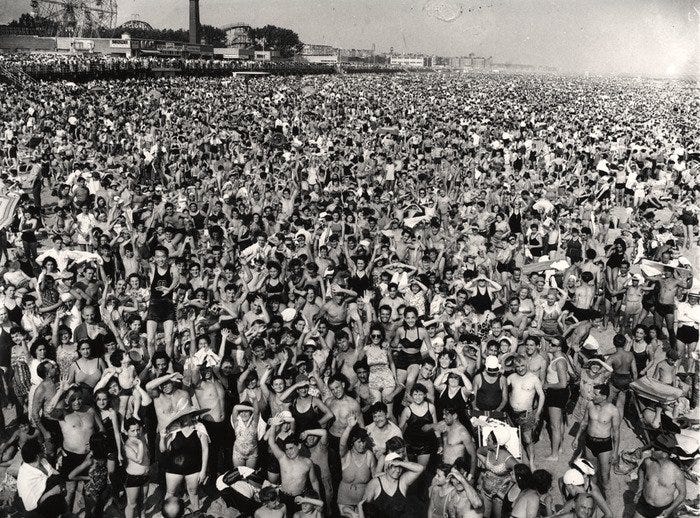
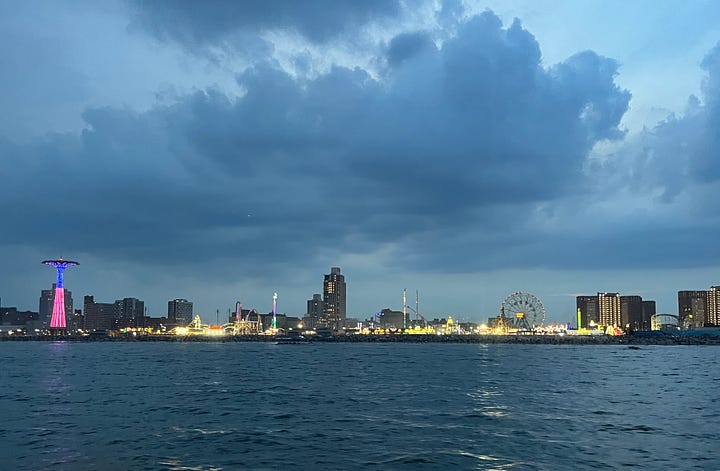
I’ve also felt a warm sense of community reading all of your emails, and I’m especially thrilled by the photos and videos of creatures and objects people have found on beaches. Keep ‘em coming! I’m going to get to all them over time (some tie into longer letters I have planned) but for now, since we’re already discussing gatherings at the water’s edge, Jia-En Ho sent in this image of a fiddler crab on a beach in Queens.
Fiddler crabs are funny little animals that will probably show up in future Landlubber dispatches, at least as background characters. They’re detritivores that feed by sifting through sand and mud for fragments of algae and other organic matter, digging holes in the intertidal zones of salt marshes, where they hide from predators, breed, and hybernate. To make more room for themselves underground and to keep track of the areas they’ve already searched through for food, Fiddler crabs gather orbs of sand and mud as they eat, packing them together with saliva, and then carry these spherical excavations outside of the burrows. Sometimes, you’ll see these balls of soil organized in neat little rows and piles. To me, they always resemble some sort of industrial depot or junkyard.
Like horseshoe crabs, fiddler crabs do their mating on big high tides that coincide with full moons, although the process is pretty different. Males pose outside their burrow, repeatedly hoisting their single, ludicrously large pincer over their heads. The crabs are named for this lopsided appendage (and named well, I think: the males really do look like they’re playing a violin as they walk around and feed). While the male suitors throw their big arms in the air, females shop for a suitable mate by scuttling from burrow to burrow and inspecting the claws and the balls of sand and mud. When they see something they like, they enter the hole to mate, and then later on, when the tide comes up, the water washes fertilized eggs out into the marsh. Below, you can watch a video I took yesterday of a male holding up its claw (although I believe, in this case, the crab was trying to tell me to back up.)
Fiddler crabs like to excavate the sand in and around patches of Spartina alterniflora, a saltmarsh cordgrass native to virtually the entire Atlantic Coast of the Americas. Frequently, on the east coast of the mainland United States, you’ll find these habitats on dense beds of ribbed mussels which, like the crabs and the cordgrass, live right at the tideline. I’ve had the chance to spend a lot of time observing those ecosystems. They’re fascinating shoreline habitats where a bivalve, a saltmarsh grass, and a crab all collaborate on the architecture.
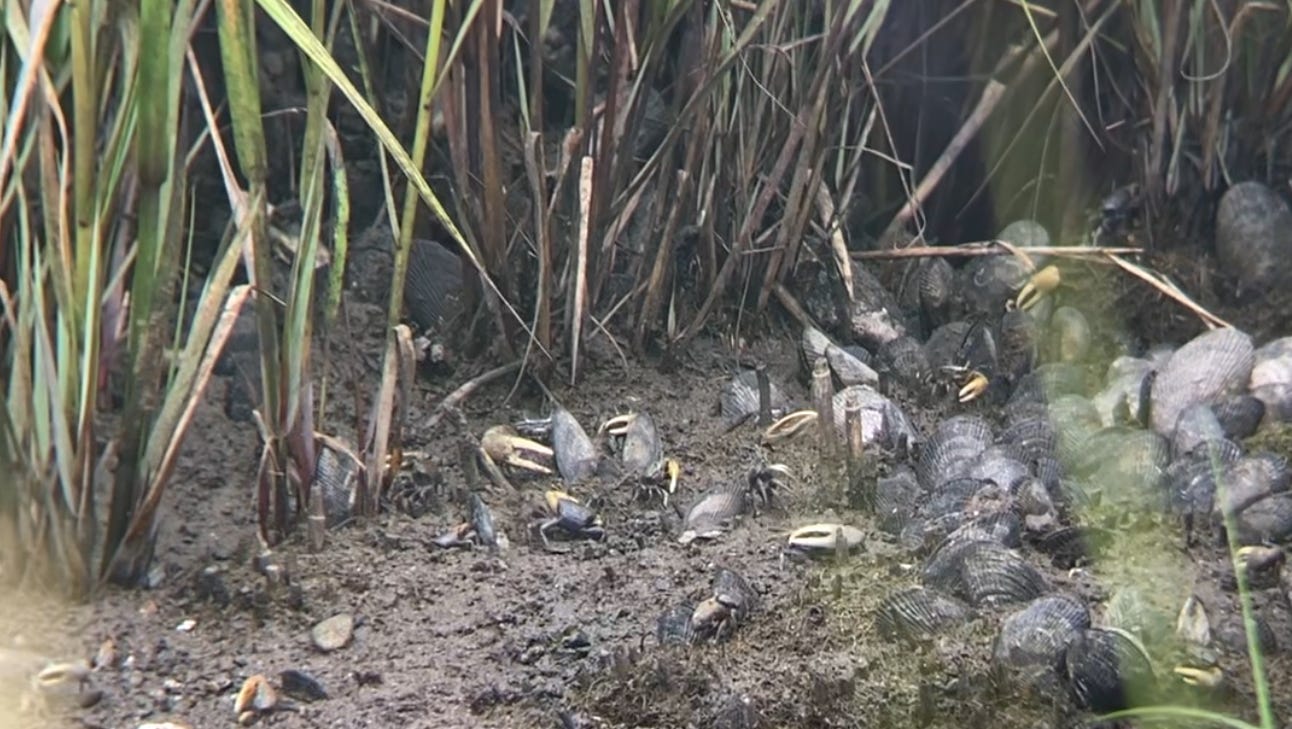
When the system is working, those organisms exist in a network of mutualistic relationships, helping each other as they pursue their own ends. The crabs aerate the soil for the spartina roots, and the spartina roots give the mussels a substrate to cling to, and the mussels filter water and bulk up the shoreline, and creating more habitat and trapping organic matter for the crabs to pick through. There are a lot of levels to the partnerships (the crabs and the mussels are also sort of competing for real estate and food), but you get the general idea. It’s a positive feedback loop, with all of the life forms piggybacking on each other to be more successful. People benefit too, because as the mussel beds expand, and the spartina roots trap sediment, the shoreline bulks up, strengthening our first line of defense against big storms and floods.
When it’s healthy, that habitat is spectacular. Juvenile fish flit in and out of pools between the patches of grass and mussel beds, and yellow-crowned night herons and glossy ibises perch overhead during the tide changes, using the grass as a blind so they can ambush crabs and fish. Clapper rails and seaside sparrows nest in those grasses, and the sand and mud below the water nearby is often full of snails, clams, and all kinds of cool marine worms and crustaceans taking advantage of opportunities that arise from the profusion of life nearby. Like everything at the water’s edge, especially these days, tidal salt marsh is a pretty tenuous niche, and in a lot of places, spartina beds are shrinking rather than expanding.
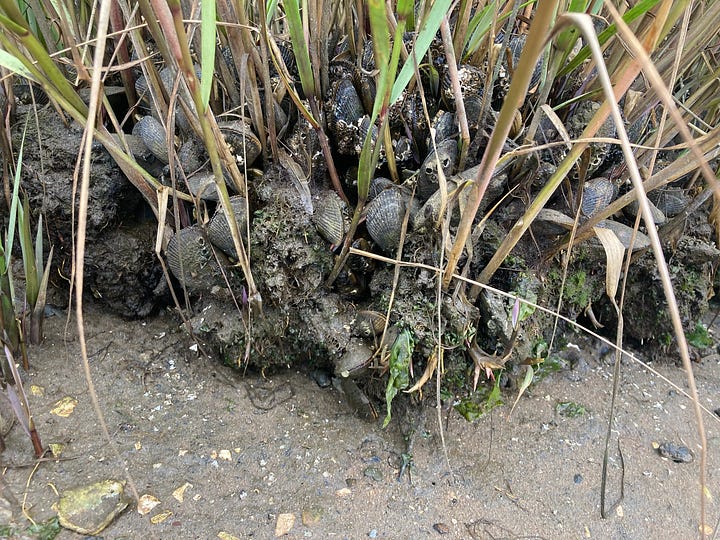
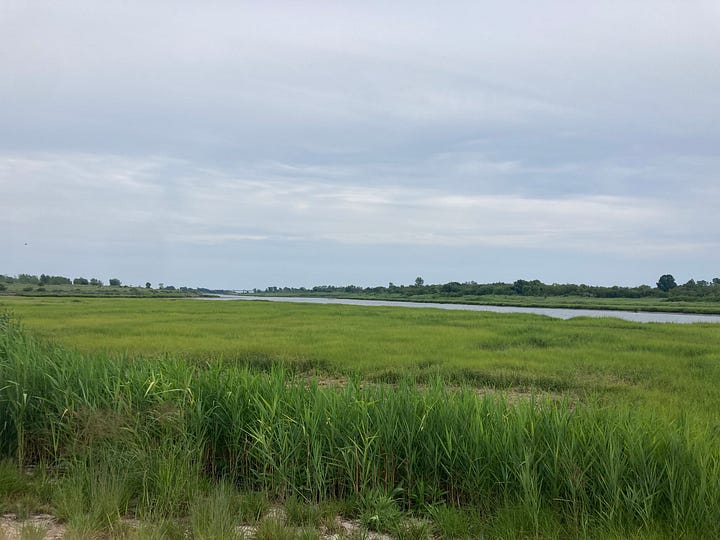
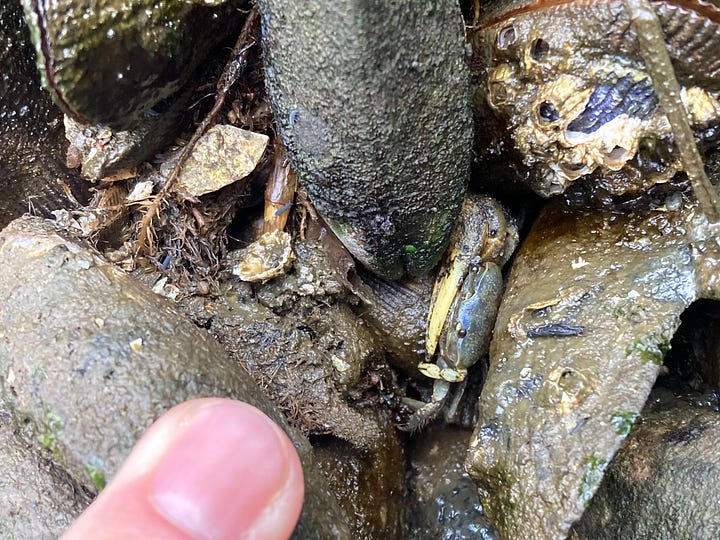
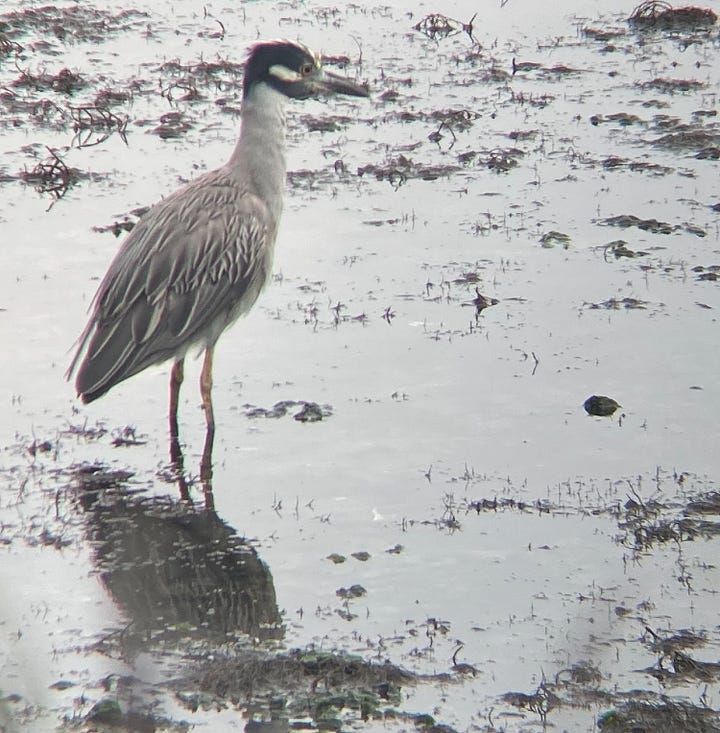
Two local scientists, Chester Zarnoch and Mary Alldred, who were always kind enough to drop by and mentor the high school-aged students I worked with out in Rockaway, have done a lot of work on those salt marshes. Chester is a professor at Baruch College at CUNY and Mary is a professor at SUNY Plattsburgh. During the summer they team up to study marshes here in NYC, trying to crack the code of spartina depletion. They’ve experimented with seeding the cordgrass and ribbed mussels together in distressed salt marshes, and analyzed core samples of old mussel beds. Part of their work (as I understand it) is focused on decoding how these habitats cycle carbon, oxygen, nitrogen, and other elements through the water and the soil. You can check out some of their published research here, here, and here.
One way to see any ecosystem is as a big, natural equation. The mussels filter, and the plants absorb, the crabs pick organic matter out of sediment and roll what’s left up to the surface. Ultimately, in theory, nitrogen (for example) has moved from one place to another. Thinking about ecology this way isn’t intuitive to me. I was a lousy chemistry student, in part because I was uninterested in anything that required me to use even basic math for a sustained period of time, but the final inputs and outputs of those transfers are important to understanding and protecting that ecosystem, which is why I’m glad there are people like Chester and Mary who are willing to crunch the numbers.2 If you live in NYC and want to see fiddler crabs, you can either head out to a marsh near you (Marine Park is a great place to see them), or visit the Wet Lab in Hudson River Park on a Tuesday from 3:00-6:00 PM when it’s open to the public.
Speaking of shoreline communities, here are some cool things to do around NYC:
There’s an exhibit called Water Stories at the BioBAT Art Space in the Brooklyn Army Terminal Building that features a lot of cool work about the shoreline, including Nathan Kensinger’s short documentary film Black Mayonnaise about some catastrophically polluted waterways in NYC. Nathan had a blog about exploring old industrial shorelines that I read for a long time years ago, and now writes for Gothamist and a few other publications. I’m planning to go check out the exhibit, which is open Saturdays and by appointment, but haven’t had time yet.
Gabriel Willow continues to lead wonderful, essayistic boat tours of the abandoned, forgotten, and lesser-known islands of the East River with Classic Harbor Line. The tours run every Sunday and Monday. I’m filling in for him on July 28th and August 11th, 12th, 18th, and 19th. You can buy tickets, which come with a free drink and a sandwich, here.
NYC Bird Alliance offers free bird tours on Governor’s Island every Saturday at 2:00 PM, meeting here. If you were sad about my tour in Marine Park being canceled for weather last week, Heydi Lopes is doing a similar one this Saturday on the 27th. There are also two upcoming “birding by boat” tours, one for Black Birder’s Week at Shirley Chisholm State Park on July 26th, and one with the Bronx River Alliance on August 4th.
If you have a waterfront/shoreline event that you think I should be sharing here, please reach out to me! I’ll have more of my tours up soon but if you can’t wait, and you want to hire me as a nature guide, you can always reach out here (just reply to this email).
Sorry, as always, to readers outside of NYC for the too-local stuff.
For the record, Chester and Mary are not scientists that spend all of their time inside doing computations or whatever (not that there’s anything wrong with that). The high school kids I sent out with them would return to a marina in Rockaway hours after the other students had gone home, by all accounts having spent long days in chest waders out in the hot sun (unfortunately for those who choose to study Spartina alterniflora, the plant shade intolerant), and trudging through mud on desolate marsh islands and shorelines. Once, on a cold winter night, I spent hours on a floating dock with Chester and a few of his graduate students installing ribbed mussel cages in a freezing downpour.






